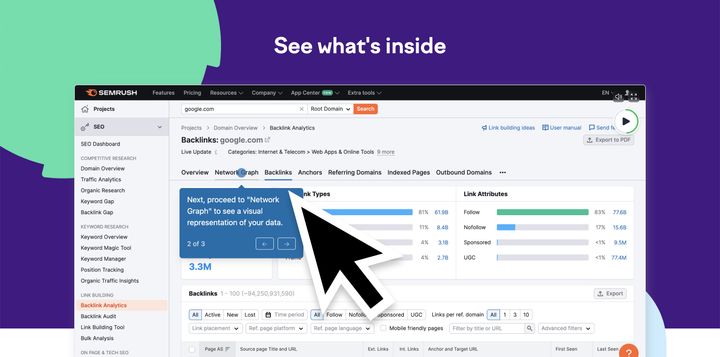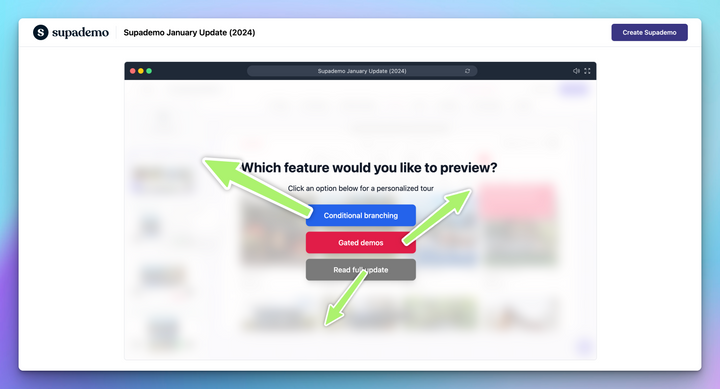We all know that people are the heart of any organization, but retaining top-performing employees isn't always a walk in the park. This balance between keeping great talent and managing expenses is a continuous challenge. Let's start by understanding what retention costs are and how we can calculate them.
- What are retention costs?
- Steps to calculating retention costs
Understanding Retention Costs
Before diving into the specifics of calculating and reducing retention costs, it's important to understand what they are and why they matter.
Definition of Retention Costs
Retention costs refer to the expenses an organization incurs to engage and keep its employees. These costs can span a wide range of areas including competitive salaries, benefits packages, and training programs. It also comprises hidden expenditures like lowered productivity during onboarding or the impact of overworked remaining staff when a position remains vacant. The main goal of these expenditures is to ensure your business retains its most valuable asset - the employees!
Importance of Calculating Retention Costs
Calculating retention costs gives you a clear picture of what it costs to keep your employees motivated and happy. It helps determine the efficiency and effectiveness of your current HR strategies. Moreover, it provides an opportunity to explore various cost-effective strategies to improve employee satisfaction and reduce turnover. Understanding these costs is the first step in making strategic decisions that can lead to significant savings and a stronger, more committed team in your organization.
Calculating Retention Costs
Before you can effectively reduce your organization's retention costs, it's crucial to understand exactly how much you're spending. There are two main categories to consider when calculating these costs: direct and indirect costs.
Direct Costs
Direct costs refer to concrete, tangible expenses associated with employee turnover and retention. These expenses include:
- Recruitment costs: advertising, interviewing, screening, and hiring
- Onboarding and training costs: materials, training sessions, and employee's time
- Severance and termination payouts
Indirect Costs
Indirect costs, on the other hand, are intangible, less visible expenses that can still have significant impact. It's important not to overlook these when calculating your total retention costs. These include:
- Loss of productivity during the transition period
- Lowered morale among remaining employees
- Lost institutional knowledge and skills
- Time spent on managing the impact of the turnover
Example Calculation
To provide a simplified example, imagine a scenario where you have an employee whose annual salary is $50,000. Taken together, the cost of recruitment, onboarding, and productivity loss can quickly add up to somewhere between 50% to 200% of the employee's annual salary. Therefore, replacing just that one employee could cost anywhere from $25,000 to $100,000. And that's a conservative estimate, given that this doesn't factor indirect costs.
By accurately calculating both direct and indirect retention costs, you can better understand the true cost of employee turnover and start developing effective strategies for reducing these costs.
The Impact of Retention Costs on the Bottom Line
Every organization should be keenly aware of how retention costs affect their bottom line. Whether it's the financial implications of high turnover, lost productivity, or a negative impact on the company culture, these expenses can quickly add up.
Financial Implications of High Turnover
First, let's consider the financial implications of high turnover. A high turnover rate not only involves recruiting and training costs but also leads to lost productivity as new employees climb the learning curve. This includes expenses related to:
- Recruitment: advertising job postings and interviewing potential candidates.
- Training: getting the new hire up to speed with the company's processes and services.
- Severance pay: compensation provided when severing ties with an existing employee.
Lost Productivity and Knowledge
Turnover also leads to lost productivity, which is incurred as departing employees slow down to disengage and newer employees take their time to become fully productive. There is also the non-quantifiable loss of knowledge and expertise that leaves when an experienced employee moves on. Not to mention the inevitable drain on the morale and productivity of the remaining staff during the transitional period.
Negative Impact on Company Culture
Lastly, high employee turnover can have a substantial negative impact on company culture. It can lead to a lack of continuity and cohesion, damaging the bonds between team members. Regular change can also create an environment of uncertainty and instability, affecting employee morale and potentially leading to further turnover. Therefore, reducing retention costs is not merely a financial concern; it's about preserving the strength and unity of your organization's culture as well.
Strategies to Reduce Retention Costs
Cutting down on retention costs doesn't mean skimping on employee satisfaction or trimming benefits. On the contrary, the key lies in smart, strategic planning in various aspects of your business operations that will create a welcoming and engaging environment. Let's delve into the various strategies:
Improve the Hiring Process
First things first, hiring the right people can save you a lot of time and money. A thorough, selective hiring process ensures that you recruit employees who are a good fit for your company's culture and job requirements. This can reduce the likelihood of turnover, thus reducing your retention costs. Some strategies to improve the hiring process may include implementing more comprehensive interviews and assessments, as well as considering the potential long-term fit and growth of each candidate.
Offer Competitive Compensation and Benefits
A major reason why employees leave is because they're offered better compensation elsewhere. To reduce retention costs, it's crucial to offer competitive salaries, benefits, and perks that align with or surpass industry standards. Remember, compensation isn't just about base salary — healthcare, retirement contributions, bonuses, and other perks are all part of an attractive compensation package.
Provide Opportunities for Growth and Development
Another key to reducing retention costs is fostering an environment where employees can grow and develop. By providing training sessions, workshops, and opportunities for career advancement, you can motivate your staff to stick around and perform their best. Regular feedback and open discussions about career paths can also reassure employees that they have a future within your organization.
Enhance Employee Engagement and Satisfaction
Lastly, a satisfied employee is a less likely to leave. Encourage employee engagement in the workplace by involving employees in decision-making processes, recognizing their achievements, and fostering a positive, inclusive work environment. Social events, team activities and clear communication can also enhance overall job satisfaction. In return, this can significantly minimize both employee turnover and the associated retention costs.
Implementing Cost-Effective Retention Initiatives
It's often said that prevention is better than cure, and in the case of reducing retention costs, that sentiment could not be more true. Implementing cost-effective retention initiatives helps maintain staff morale and prevents them from seeking employment elsewhere. Here are a few strategies you can implement:
Conduct Stay Interviews
Stay interviews are a valuable tool in the manager's toolbox as they help identify potential issues before they lead to employee turnover. Unlike exit interviews which happen after an employee decides to leave, stay interviews take place while the employee is still part of your team. The goal here is to understand what keeps them at your company, what might entice them to leave, and what changes they would like to see. By addressing their concerns proactively, you can potentially reduce employee turnover and the associated retention costs.
Regularly Measure Employee Satisfaction
One way of gaiving a solid grasp on your employees' feelings towards their workplace is by continuously measuring their satisfaction. Use surveys, open-discussions, or suggestion boxes to gather information. The feedback you collect will allow you to better understand your employees' needs, and adjust your strategies accordingly, thereby increasing staff retention.
Create a Positive Work Environment
Creating a positive work environment is more than offering casual Fridays or office parties. It involves fostering a culture of respect and inclusivity, promoting work-life balance, and providing opportunities for growth and development. A happy employee is more likely to stay engaged and remain loyal to your company, leading to reduced retention costs. Incorporating these strategies in your employee retention initiatives can go a long way in saving costs and keeping your top talent close.
The Importance of Continuous Evaluation and Adjustment
Continuous evaluation and adjustment of your retention initiatives is not only vital in maintaining a productive workspace, but it also helps in reducing your organization's overall retention costs.
Monitor turnover rates and retention costs
Begin by getting a handle on your turnover rate and concurrent retention costs. These are some steps:
- Track turnover rates monthly or quarterly
- Calculate the average cost of replacing an employee
Make use of these figures to understand how much employee turnover is costing your business. This can serve as a foundation for determining where changes need to be made.
Assess the effectiveness of retention initiatives
Once you've calculated your retention costs, the next step is to evaluate the impact of your current employee retention efforts.
- Consider conducting employee surveys or interviews
- Check if there is a significant reduction in turnover rates after the implementation of these initiatives
- Analyze the change in employees' job satisfaction and engagement levels
Through this assessment, you can identify what's working and what isn't, and make informed decisions on where to invest your resources.
Make necessary adjustments to improve results
After assessing the effectiveness, don’t hesitate to tweak your strategies. Retention initiatives should never be set in stone; they should be dynamic and adapt to the evolving needs and expectations of your workforce.
- Keep a finger on the pulse of industry trends
- Prioritize feedback from employees
By continuously evaluating and adjusting your strategies, you'll be better equipped to reduce retention costs and build a more engaged and satisfied workforce.
In conclusion, understanding and managing retention costs is crucial for a company's financial wellbeing. Prioritizing employee satisfaction and investing in cost-effective retention strategies can dramatically reduce these costs. Remember:
- Regularly calculate your retention costs
- Implement initiatives to reduce employee turnover
- Foster a positive work environment
Together, we can create happier employees and healthier bottom lines!




